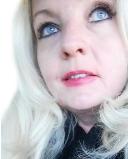Synesthesia
Why Do We Call It World Wide Web?
Synesthete Sir Robert Cailliau named it for his green "w's"
Posted February 13, 2012
The dashing engineer and synesthete Sir Robert Cailliau has had to go through a secure keypad door or two in his time.
He's one of the world's premier scientists, a developer of the world wide web, and a long-time employee at CERN, where a supercollider will one day answer questions about not only the origin of our universe but life in the present day. The Belgian-born man knighted by his homeland was faced with one of those guarded passageways shortly before speaking to me for my book, Tasting the Universe, where this interview first appeared.

"A few weeks ago I had to go in and out of a building complex protected by a code that visitors had to type on a keypad at the entrance," he told me. "I had memorized the code and things were fine. Then I had to go back there after a number of days, and I could not quite remember it," he recalls.
Then the tiny particles that traverse the tunnel pathways of his own brain at high speeds got to work. His synesthesia kicked in.
"But closing my eyes and thinking of it, I saw the color pattern and was thus able to fill in the digits I had forgotten."
Sir Robert, a Ph.D. who worked with Sir Tim Berners-Lee of Great Britain on creating the world wide web, (initially to create a communications medium for scientists working on the collider), first noticed his numbers and letters had color in his mind's eye around the age of 10. But he was almost 50 and had already changed the world before he knew there was a name for his special quality.
"I was about 10 or maybe younger; I do not remember because I did not pay attention to the moment. I have only the common, ‘mild' form of seeing symbols in colors. People thought I was crazy, so I stopped talking about it. This is apparently a common phenomenon: ignoring it because others don't believe you anyway.
"When I was 50 or so, some people suggested that I had picked up the associations from children's alphabet books. I recently found all three that I had in my parent's attic. I remembered only two, but none of the three had colours that even came close to my alphabet. So that could not have been it. It was only after 1990 that I came across an article in New Scientist that mentioned the name. Then I published my alphabet and began to get a lot of e-mail from other people who had not realized. One woman thanked me because her husband now finally believes her."
The web began, Sir Robert says, when his partner in creating the tool we all use today recommended it be called the "world wide web." The engineer didn't at first like the way it sounded; he found it cumbersome. But Sir Robert did like the green hue all those "w's" elicited -- it's his favorite color -- so he went with it.
"In 1990, months before there was a shred of code, Tim and I wanted to find a good name for the project. Sometimes, after a hard day's work in warm offices we drank a beer on the CERN cafeteria terrace before going home. On one such occasion Tim came up with "World-Wide Web". I would have preferred something shorter, but to find a catching name is not easy. I agreed to use WWW for the new document that was to go to management and "find a better name later". WWW stayed: it summarized well what it was.
"Because I'm a synesthete I see characters in colors and I perceive a W as green. I liked that. So it remained WWW. And there was indeed a logo that we used a lot in the beginning. It was made from three Ws: white, light green and darker green."
Sir Robert's letters, numbers and even punctuation marks are colored. "They are flat colors, like print," he says. You can find his alphabet at :http://www.robertcailliau.eu/Alphabetical/M/Me/Alphabet.html.
I ask him what synesthesia means to him and he responds with yet another computer term.
"It has often worked as a "negative" spelling checker (and it is ‘spelling checker' not ‘spell checker'). When I see a spelling error I see a color clash and while I may not instantly know the correct spelling, I still have been alerted."
He believes synesthesia is just an engineering glitch of the brain, he tells me. But the advantages to memory make it a happy one.
And he believes the Internet will never replace face-to-face human interaction. As he is fond of saying, "there's no such thing as a virtual beer."




